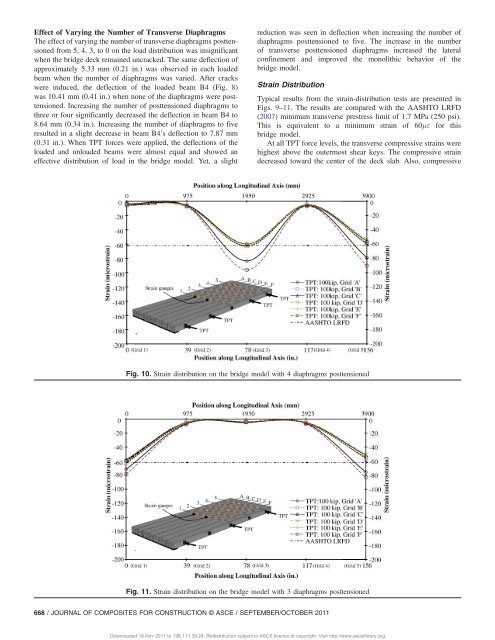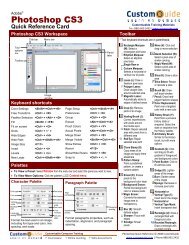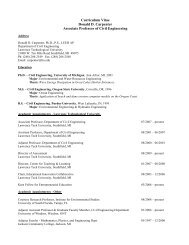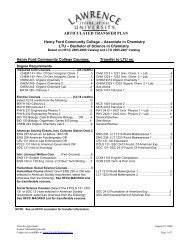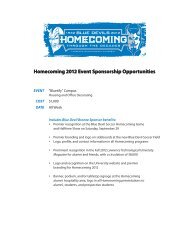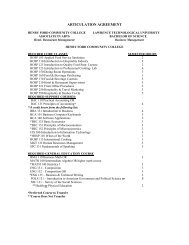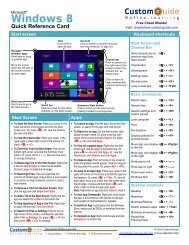Flexural Performance of Carbon Fiber-Reinforced Polymer ...
Flexural Performance of Carbon Fiber-Reinforced Polymer ...
Flexural Performance of Carbon Fiber-Reinforced Polymer ...
Create successful ePaper yourself
Turn your PDF publications into a flip-book with our unique Google optimized e-Paper software.
Effect <strong>of</strong> Varying the Number <strong>of</strong> Transverse DiaphragmsThe effect <strong>of</strong> varying the number <strong>of</strong> transverse diaphragms posttensionedfrom 5, 4, 3, to 0 on the load distribution was insignificantwhen the bridge deck remained uncracked. The same deflection <strong>of</strong>approximately 5.33 mm (0.21 in.) was observed in each loadedbeam when the number <strong>of</strong> diaphragms was varied. After crackswere induced, the deflection <strong>of</strong> the loaded beam B4 (Fig. 8)was 10.41 mm (0.41 in.) when none <strong>of</strong> the diaphragms were posttensioned.Increasing the number <strong>of</strong> posttensioned diaphragms tothree or four significantly decreased the deflection in beam B4 to8.64 mm (0.34 in.). Increasing the number <strong>of</strong> diaphragms to fiveresulted in a slight decrease in beam B4’s deflection to 7.87 mm(0.31 in.). When TPT forces were applied, the deflections <strong>of</strong> theloaded and unloaded beams were almost equal and showed aneffective distribution <strong>of</strong> load in the bridge model. Yet, a slightreduction was seen in deflection when increasing the number <strong>of</strong>diaphragms posttensioned to five. The increase in the number<strong>of</strong> transverse posttensioned diaphragms increased the lateralconfinement and improved the monolithic behavior <strong>of</strong> thebridge model.Strain DistributionTypical results from the strain-distribution tests are presented inFigs. 9–11. The results are compared with the AASHTO LRFD(2007) minimum transverse prestress limit <strong>of</strong> 1.7 MPa (250 psi).This is equivalent to a minimum strain <strong>of</strong> 60με for thisbridge model.At all TPT force levels, the transverse compressive strains werehighest above the outermost shear keys. The compressive straindecreased toward the center <strong>of</strong> the deck slab. Also, compressiveFig. 10. Strain distribution on the bridge model with 4 diaphragms posttensionedFig. 11. Strain distribution on the bridge model with 3 diaphragms posttensioned668 / JOURNAL OF COMPOSITES FOR CONSTRUCTION © ASCE / SEPTEMBER/OCTOBER 2011Downloaded 18 Nov 2011 to 198.111.39.24. Redistribution subject to ASCE license or copyright. Visit http://www.ascelibrary.org


